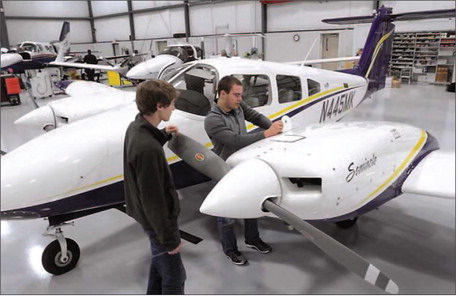Last July, Minnesota State’s Aviation program became one of the eight programs in the country to become a part of Delta Airlines’ “Propel Pilot Career Program” and it’s already having an impact.

“It’s helped peak the interest of incoming students and, for the students that are already here, it’s given them more motivation,” Tom Peterson, M.S., ATP, CFI, and Assistant Professor of Aviation at MSU, said.
Peterson says the partnership creates security for aviation students, too, essentially guaranteeing them a job with Delta once they graduate.
“It’s a direct line. [The students] are gonna go from here then go through a few other wickets along the way and then [they’re] gonna end up at Delta for sure,” he said. “[They] won’t have to interview again.”
The absence of the need for a second interview stems from one of the key components of the Delta partnership. Delta representatives reach out to the more than 300 MSU aviation students while they’re still undergrads and interview them while they’re still studying.
Getting the program to campus wasn’t an easy task. Peterson said the department worked vigilantly to add new things and modify the program to get Delta interested and after a few years, it paid off when Delta reached out to MSU.
“We didn’t solicit Delta to come, they came to us and showed interest and that really validated that what we’re doing here was a good thing,” Peterson said.
Although job security is a benefit to the partnership that security doesn’t come without a lot of hard work.
“Aviation is not like a regular degree in that you go to class and then you have all this time off because when you’re not in class, you have to be at the airport three or four times a week doing the flight training,” Peterson said.
The hard work is necessary because of strict standards from the Federal Aviation Administration (FAA) for incoming pilots to be completely ready to go once they graduate. One of the requirements is for students to have 1,000 hours of flight time prior to graduation, something Peterson said can take a year or more to complete.
Peterson encourages students who are interested in aviation to go for it, citing an ample need for pilots due to high retirement rates of pilots. He cautions that the program is rigorous and expensive, but also that the end result is worth it.
“There is a lot of discipline and dedication to the whole affair, but there’s a drop at the end of it,” Peterson said. “A lot of our graduates have three or four job offers for regional airlines after college, so it’s all worth it.”
